Raimona’s Shy Creatures
First published in Sanctuary Cub,
Vol. 43
No. 5,
May 2023
In March 2023, we decided to spend a day exploring Raimona National Park’s biodiversity-rich habitats. Raimona and its adjoining forests are crucial for the transboundary movement of elephants and other wildlife. By Tamaghna Sengupta.
A New Haven
The Raimona National Park is the land of one of the world’s most endangered primates, Gee’s golden langur. Established in June 2021, as Assam’s sixth national park, it is a short two-hour drive from my hometown Alipurduar.
Three friends and I left at 5.30 a.m. for the Kachugaon Forest Range Office, where we met our guide Tanu Basumatary. After a hearty breakfast at a local shop, we started our day-long safari at 8.30 a.m.
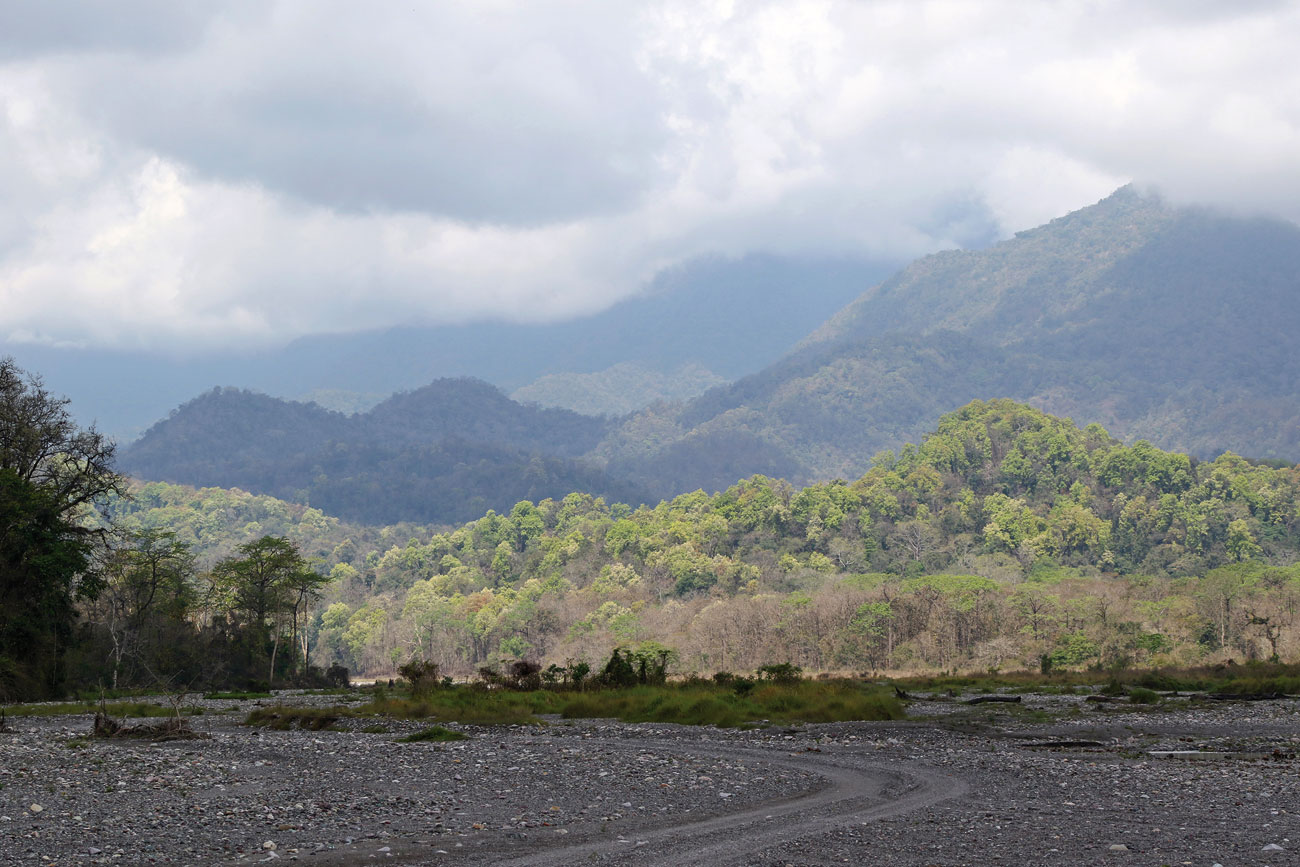
While driving along the riverbed to the Western Range, the guide showed the author markings of the India-Bhutan border. Photo: Tamaghna Sengupta.
Spread over 422 sq. km. in Kokrajhar district in western Assam, this park is expected to help biodiversity conservation and ecotourism. Its creation is an opportunity for revenue generation for the local Bodo tribe, who mostly depend on agriculture and forest resources for their livelihood. Our guide told us that Raimona shares contiguous forest patches with Bhutan’s Phibsoo Wildlife Sanctuary to its north, Manas National Park to its east and Buxa Tiger Reserve of West Bengal to the west. These forests are crucial for the transboundary movement of elephants, and also other wildlife.
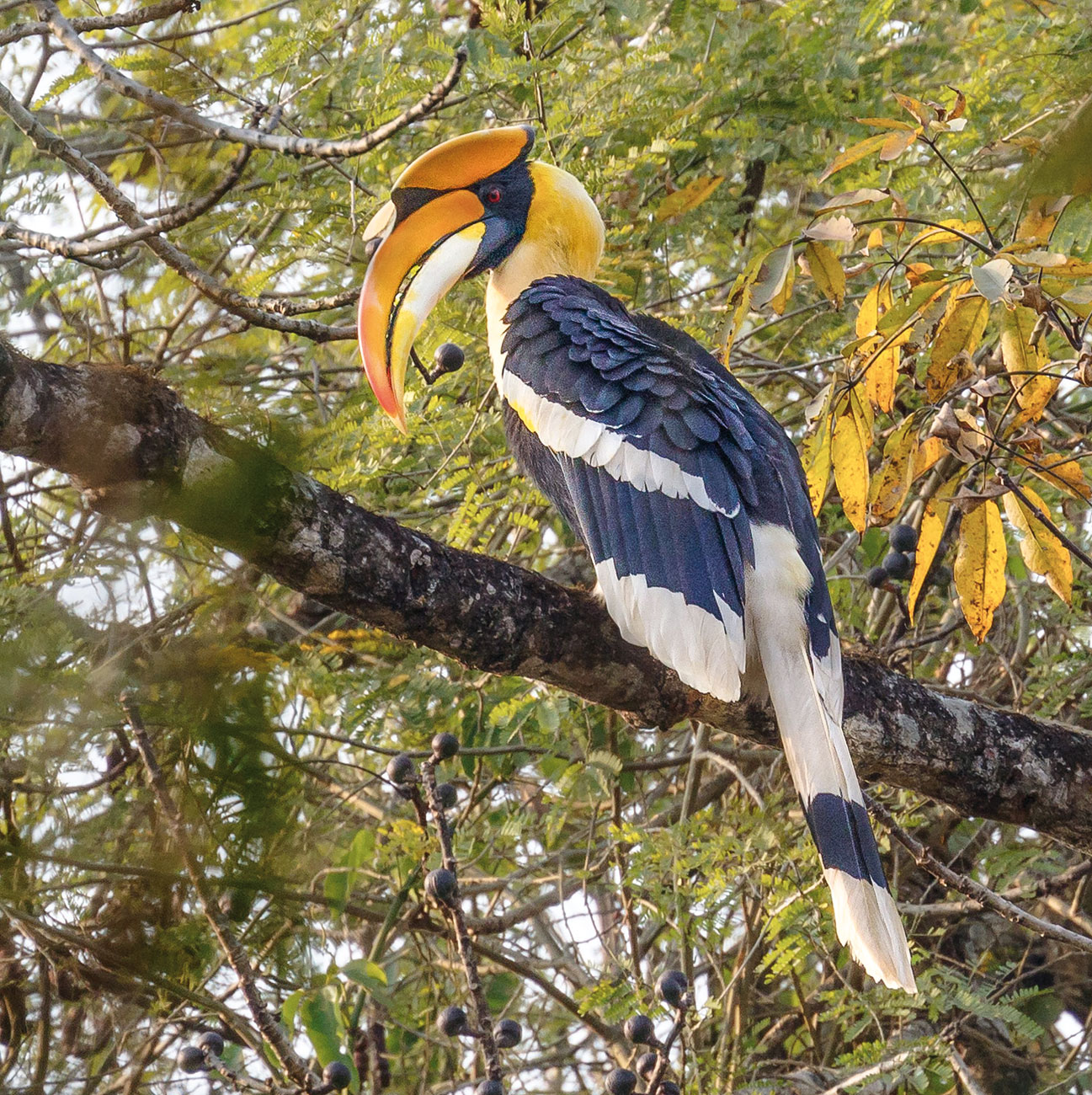
Great Hornbill. Photo: Public Domain/Umang Jung Thapa.
Shy, Timid Creatures
Of the four ranges of Raimona – Eastern, Central, Western and Sanfan Range – we started our safari from the Central Range, where we were greeted by sal and teak plantations. Our guide told us that Raimona does not have grasslands like Manas or Kaziranga, and the habitats are either deciduous or evergreen forests.
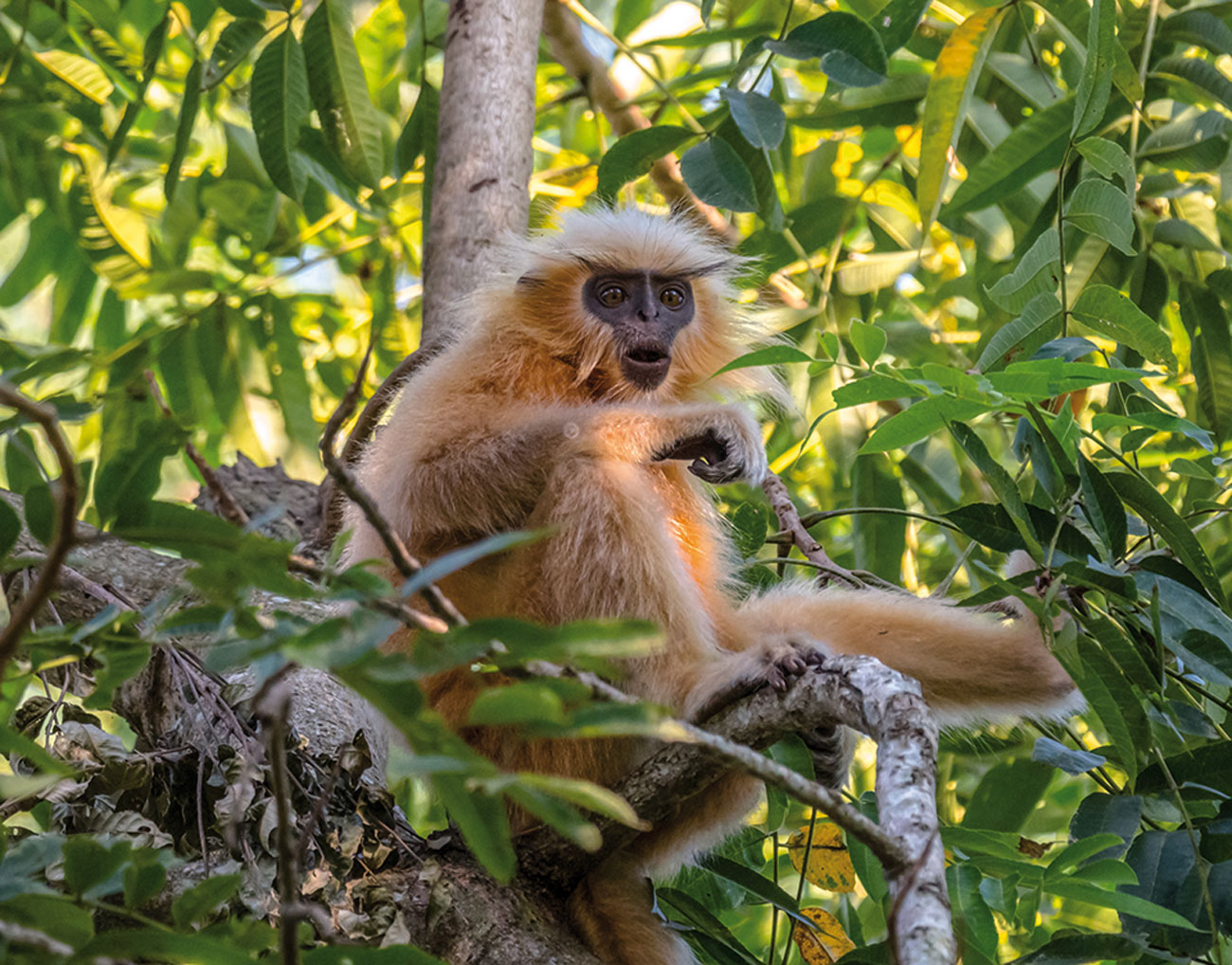
Golden langur. Photo: Public Domain/Johannes Bahrdt.
We first encountered a male Great Hornbill and when we started photographing him, he flew away. We then spotted the Oriental Pied Hornbill, Crested Goshawk, Oriental Honey Buzzard, Crested Serpent Eagle, Scarlet Minivet, Jungle Owlet, and others. Not surprisingly, Raimona is recognised as an important bird and biodiversity area.
The first mammal we saw was a solitary gaur that seemed to have spotted us too. He ran into the forest before we could photograph him. We then saw a herd of chital, perhaps out for a drink from Hell river on that hot and humid afternoon, but they scurried into the forest on seeing our vehicle. This behaviour was quite different from other national parks. They were shy and timid and quickly moved away if they saw a vehicle or human movement as they were not habituated to such intrusions.
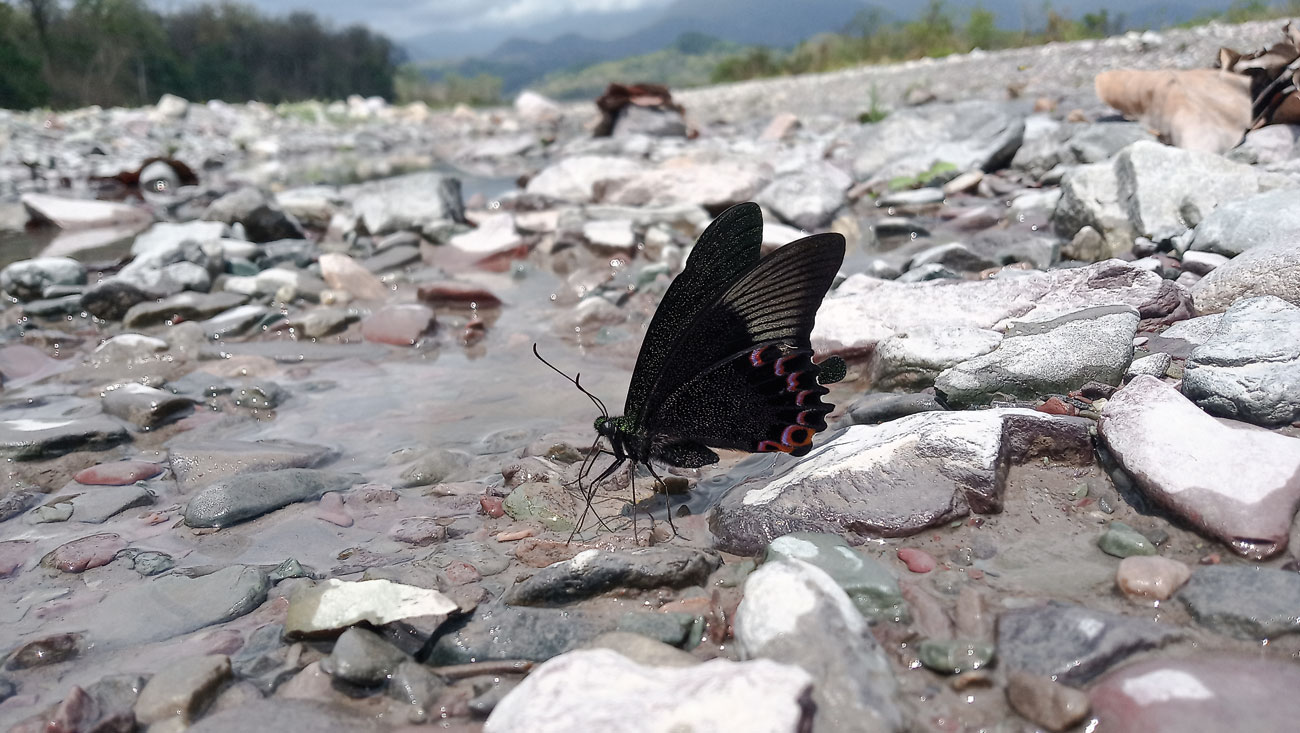
Raimona has over 150 butterfly species. Photo: Tamaghna Sengupta.
Golden Hour, Interrupted
The scenic Bhutan Hills under dark rain clouds looked beautiful. Along with Hell, several rivers such as Polo, Pekua, Saralbhanga, Singinala, Sindrinala, Gital, Sankosh, and small streams keep the forest alive. Just as we entered the evergreen forest patch, we saw our first group of golden langurs that are found only in some forests and Protected Areas of Assam, Raimona being one of them. The park is also home to the tiger, clouded leopard, Himalayan black bear and hog deer. Ultapani and Ripu-Chirang Reserve Forest – now under Raimona – are home to some rare butterflies. Over 150 butterfly species have been recorded here.
Though we had planned to explore the entire Western Range, the weather changed quickly and forced us to pack our cameras and equipment. Just then, our guide spotted the very rare Red-headed Trogon! Like the other species we sighted that day, this bird too was not interested in being recorded. By then the rain had taken the form of a thunderstorm. This was the first time we experienced a storm inside a deep forest.
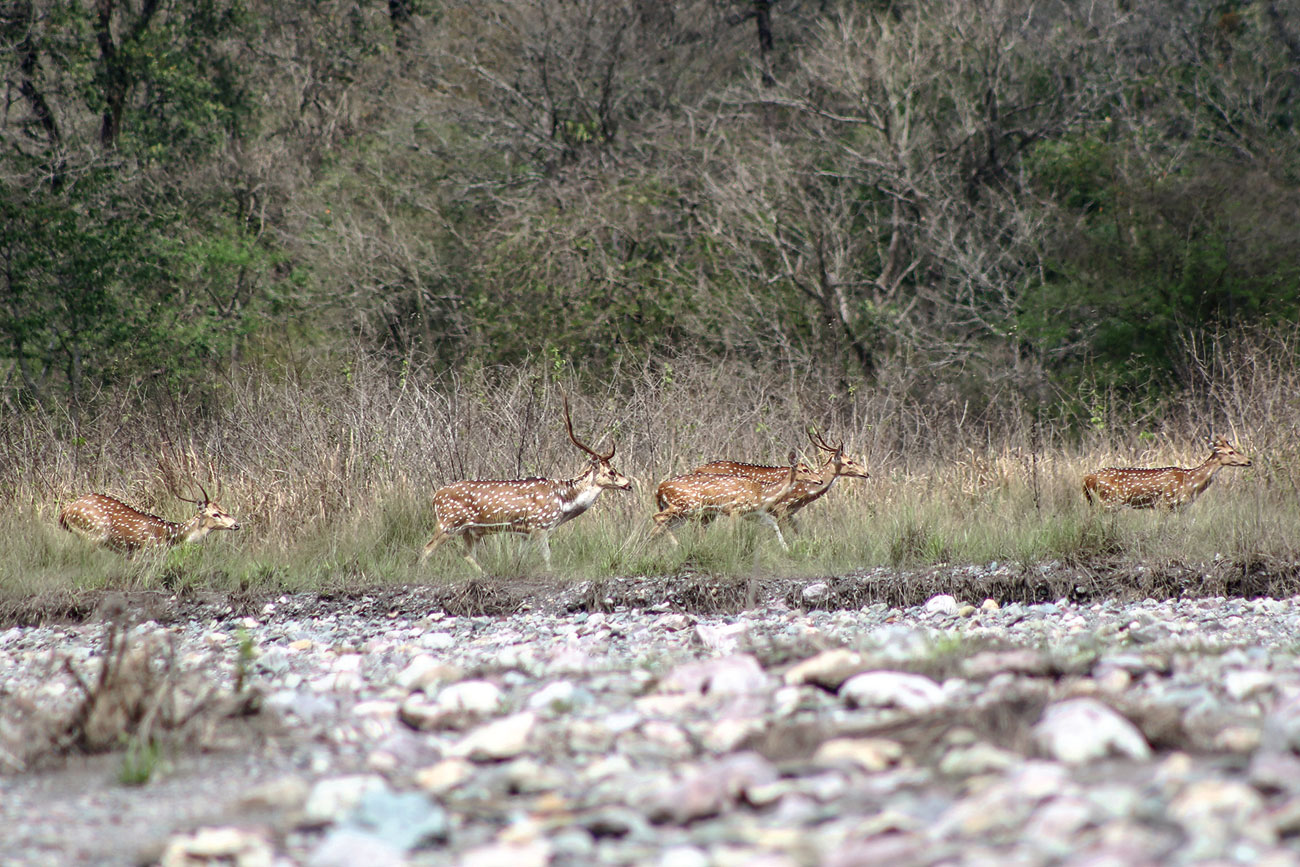
Spotted deer or chital. Photo: Tamaghna Sengupta.
We hurriedly began heading to the exit. Luckily for us, the bird was not the last wild vision of the day. An elephant stood beside the forest trail. After all, these woods were known for their historical elephant range. And as was typical that day, we couldn’t take any photos. We ended our trip to Raimona with a quiet goodbye to the pachyderm as he watched us trundle out of the soaked jungle.
Top Tips For Kids On Safari
~ If you study a habitat properly, you will have an idea of the species you may spot there.
~ There are few accommodation options in Raimona. One can visit from the Buxa Tiger Reserve or Manas National Park.
~ You can stay in hotels in Gossaigaon, which is 18 km. away.
Tamaghna Sengupta is a wildlife photographer and writer from Alipurduar, with an interest in butterflies. He works as a Project Assistant with the Rajabhatkhawa Butterfly Conservatory of the Buxa Tiger Reserve, West Bengal.






